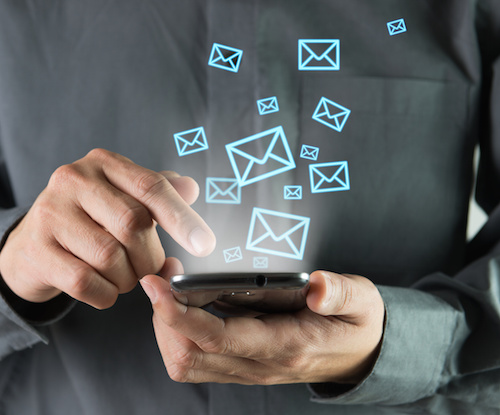How Outbound Calls Can Lift Your Sagging Email Engagement Rates
Have you noticed a sharp uptick in sales emails appearing in your email and LinkedIn inboxes? I know I have. According to the Email Statistics Report from the Radicati Group, there has been a steady increase in the number of business emails both sent and received. As of last year, the average employee receives a whopping 84 emails per day!
 If you ask me, the reason that business emails are on the rise is because it has never been easier to send emails en masse. Sales reps are regularly using email cadence software and even marketing automation software to put their prospects on blast. It makes sense. Sending more emails will result in more responses, leads and opportunities, right?
If you ask me, the reason that business emails are on the rise is because it has never been easier to send emails en masse. Sales reps are regularly using email cadence software and even marketing automation software to put their prospects on blast. It makes sense. Sending more emails will result in more responses, leads and opportunities, right?
The trouble is that the more emails that appear in your prospects’ inboxes, the less likely they will be to even read your email. To use a common analogy: the more noise, the harder it is for your signal to get through. Just look at recent figures from TOPO HQ that show that only 23% of sales emails are even opened. Obviously this reveals a clear and present need to optimize the heck out of your sales emails (especially those subject lines). But if you’ve noticed your sales email engagement rates sagging, you may want to start by putting more emphasis on voice communications.
The Need for a Balanced Voice and Email Cadence
Stuart Leung, SEO Manager at Salesforce, put the need for a balanced attack between email and voice well: “Technology has made some parts of the sales process easier, enabling us to close a sale without ever seeing a prospect’s face, or talking to them over the phone. But are we selling ourselves short? Are we forgetting the most effective way to make a real connection and close a prospect: human interaction?”
Sure, a well-crafted sales email can be a great ice-breaker. But emails should only be one part of your outreach strategy. Remember that different people like to communicate in different ways. But the goal of most B2B sales cadences is to ultimately get a prospect on the phone. By cold calling you can skip several arduous steps (getting a prospect to respond to an email, having a back-and-forth, scheduling a call, etc.) Cold calling—when it works—can be like going through a hedge maze with a machete.
How Sales Calls Can Drive Pipeline
A well-balanced sales cadence, which includes calls, emails and social outreach gives your prospects the opportunity to communicate with you in the way that they feel most comfortable. But whatever you do, don’t leave sales calls out of your cadence. Because even when prospects don’t pick up their phones or stay on the phone long, it can inspire them to open and respond to email and InMail messages.
To illustrate my point, entrepreneur Justin Bailie, recently posted on LinkedIn about an experiment he conducted. Bailie made 300 cold calls in order to see the effects it had on pipeline. After those 300 calls, Bailie only booked a single meeting. And while the cold calls in and of themselves were not yielding lucrative results, they had an extremely powerful effect on Bailie’s overall pipeline.
According to Justin Bailie, “Although during this 11 week calling period the calls themselves yielded jack squat I was simultaneously experiencing the largest volume of inbound leads through other channels that I ever have. I had more prospects reaching out to me via LinkedIn, more referrals coming via email from partners and happy customers and more web forms being filled out.” And after stopping the experiment, Bailie’s pipeline dropped right back to where it was before.
Example of a Sales Cadence
Justin Bailie’s efforts had a powerful affect on his company’s pipeline. But the results could have been even more dramatic. In my post for Sales Hacker, I lay out some easy-to-implement hacks that can get way more of your prospects to pick up their phones.
Just like how phone calls can raise email engagement rates, emails and social outreach can raise your chances of getting and keeping prospects on the phone. Another reason why multiple contact methods are a must for your sales cadence.
From that post, here’s an example of a balanced sales cadence you can use to bolster engagement rates:
Day One: Send email
Day Two: Connect on LinkedIn
Day Three: Call
Day Five: Follow-up email
Day Six: Follow-up call
Day Eight: Another follow-up call
A balanced cadence is the key to driving pipeline and increasing engagement rates. So if your email engagement rates have been sagging, it might just be time to pick up the phone.
For more tips on how to personalize calls and emails to drive maximum engagement, check out our on-demand webinar From Cold to Customer.
